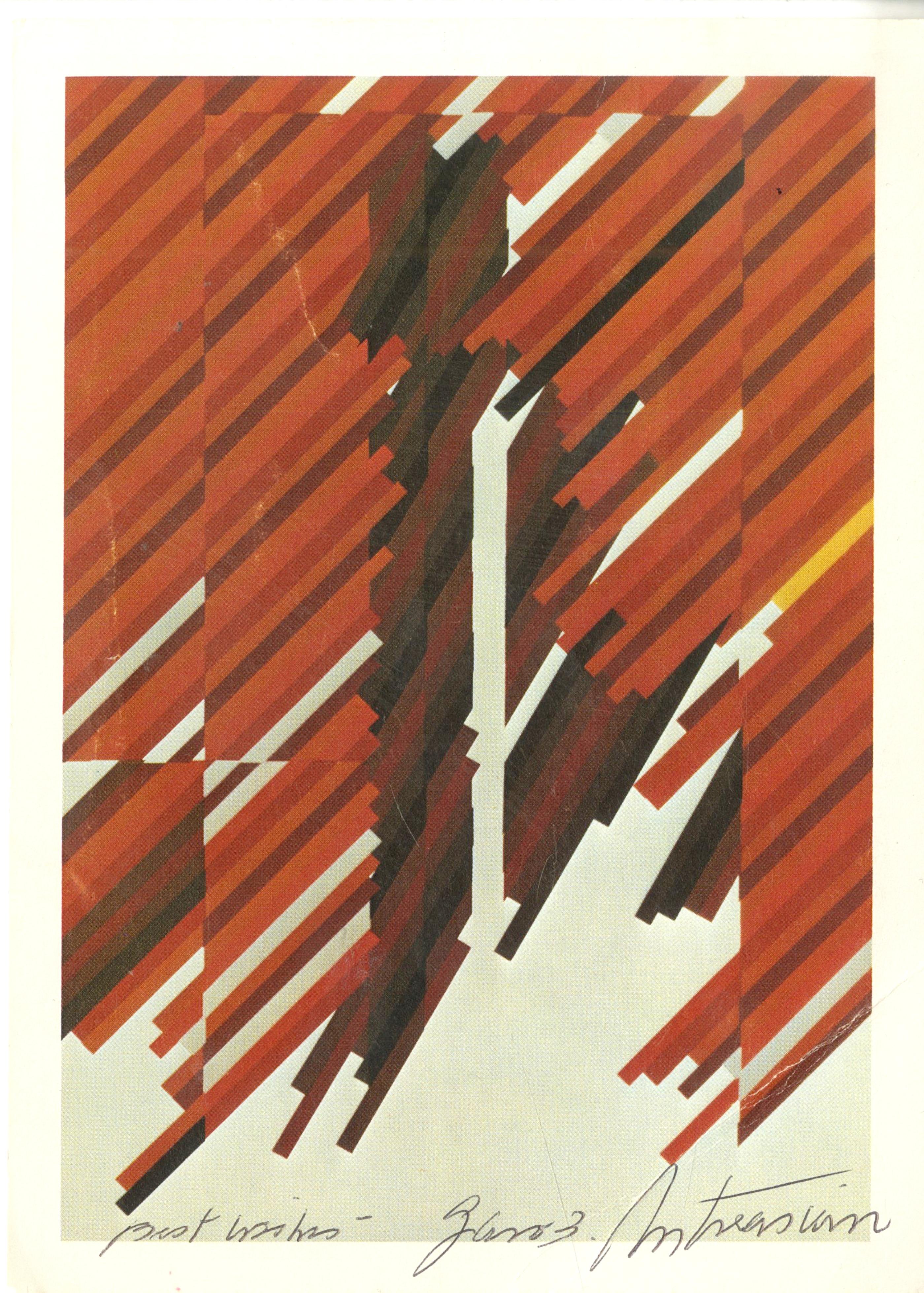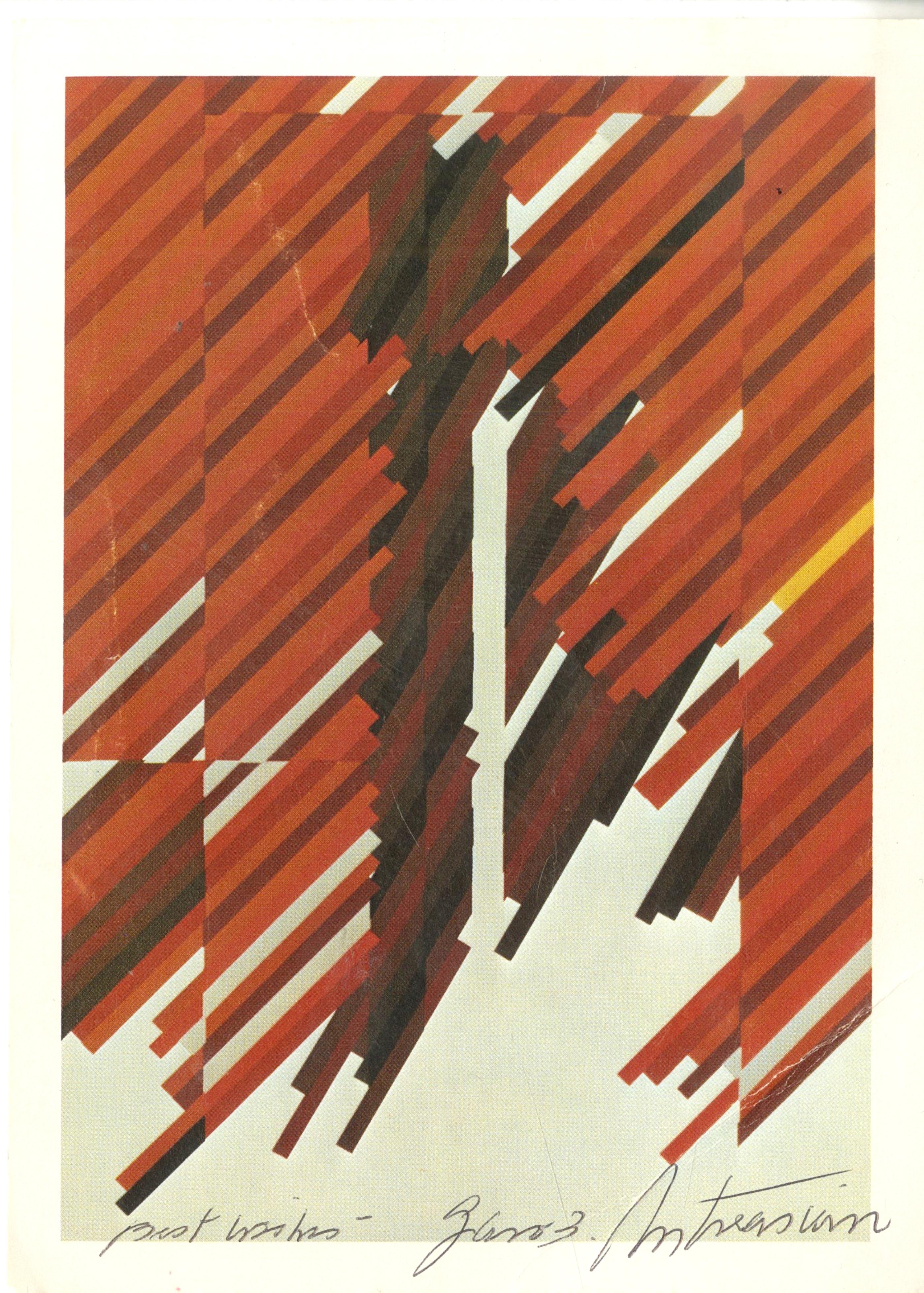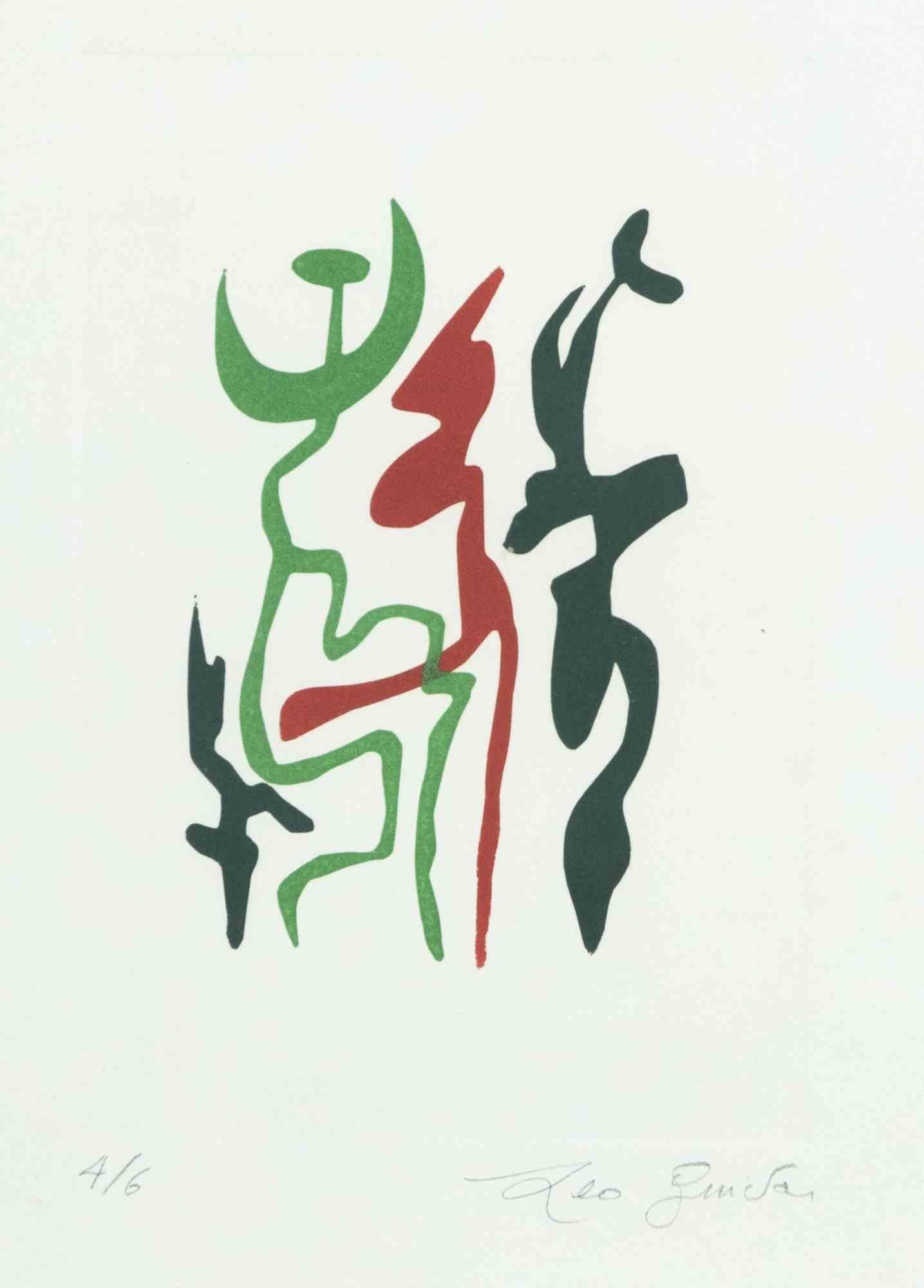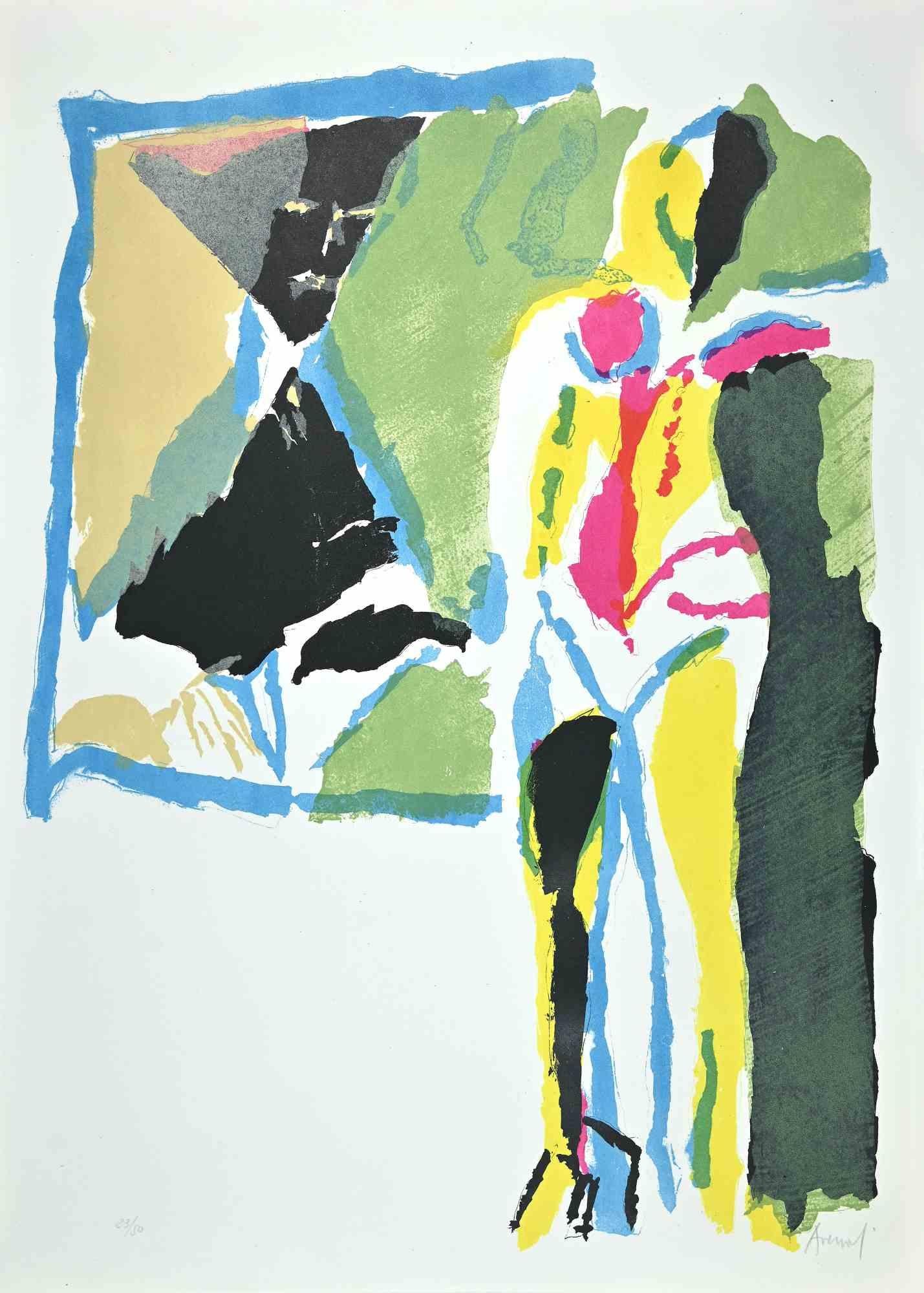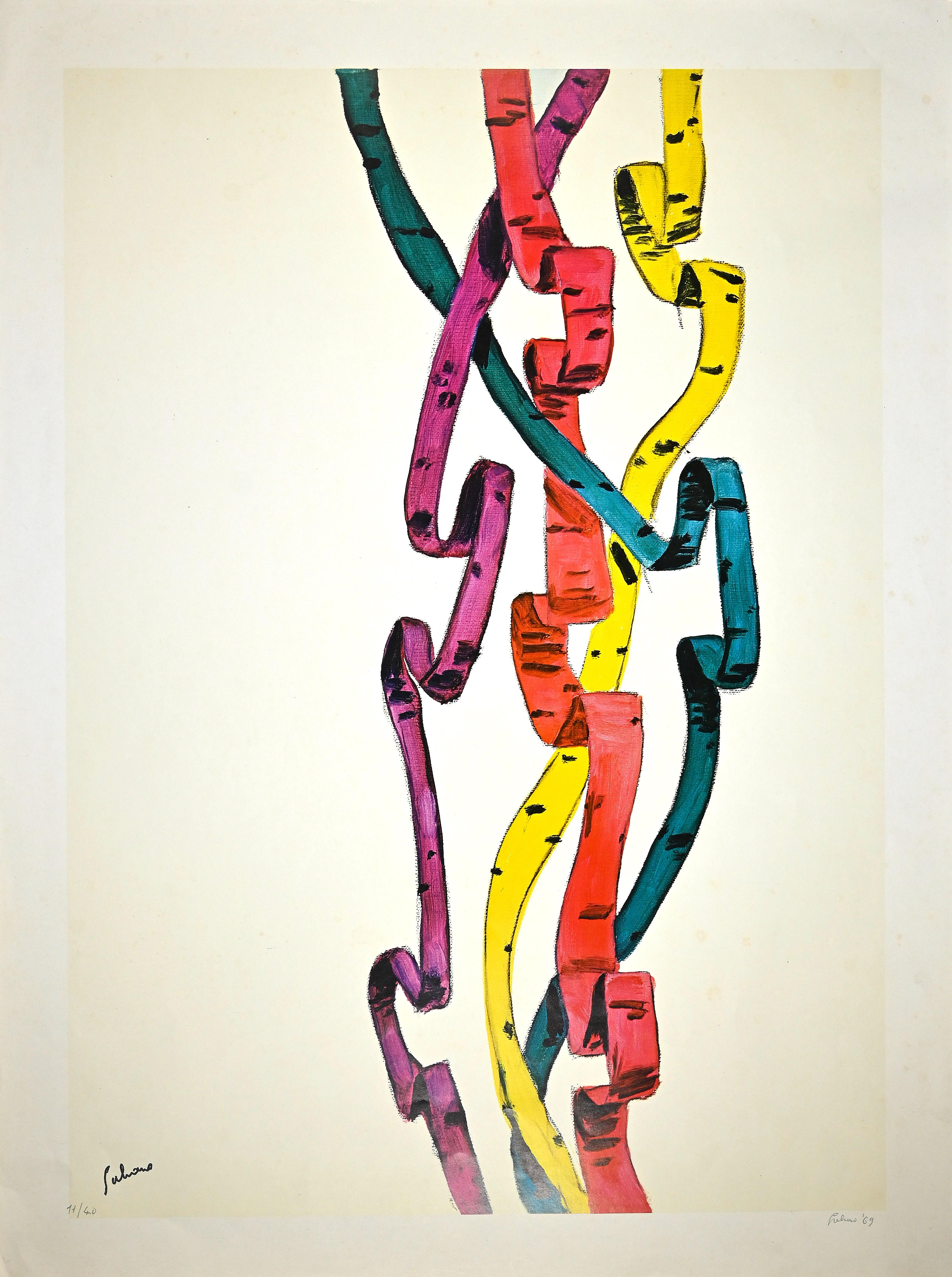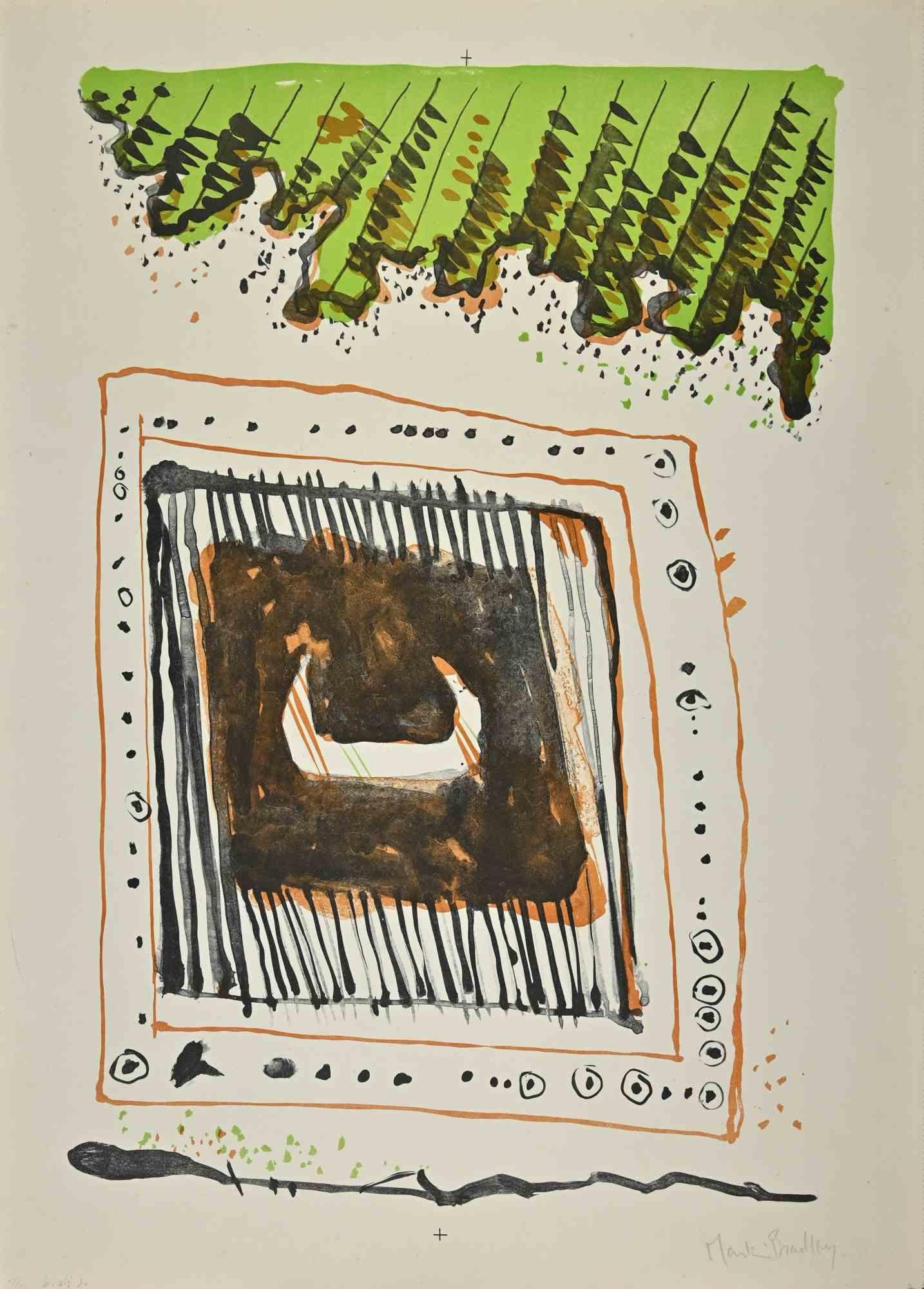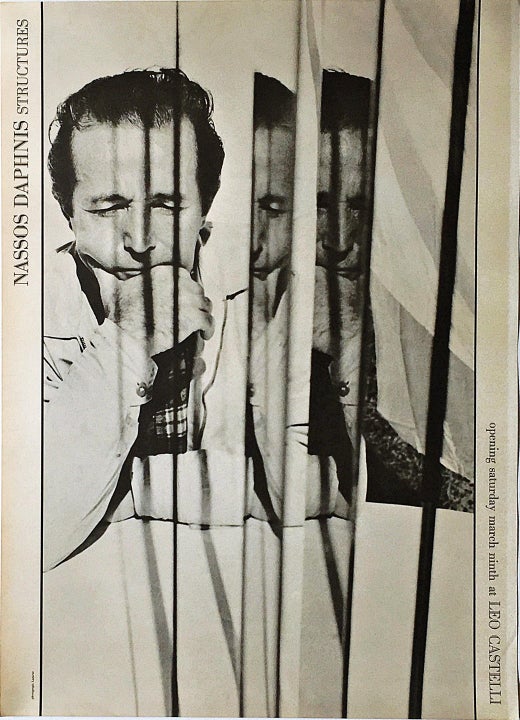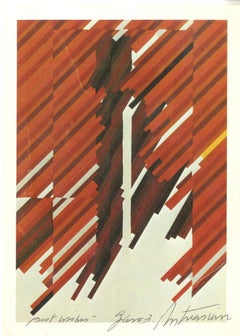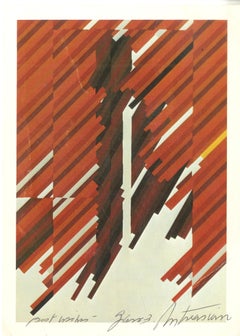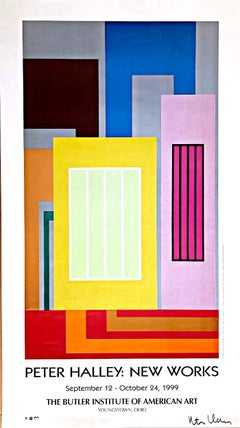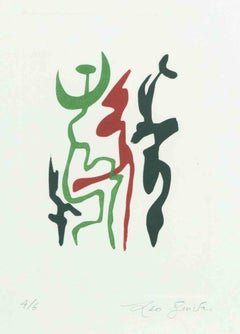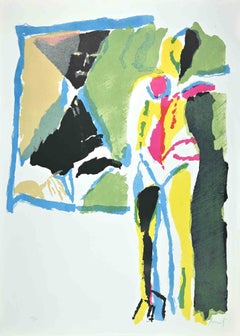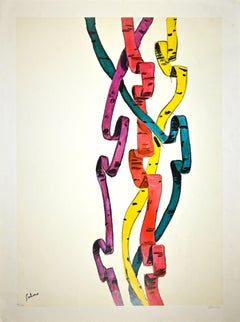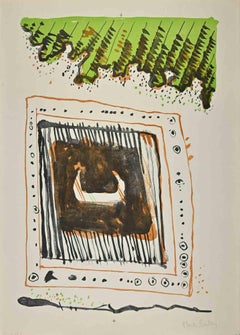Items Similar to Nassos Daphnos, Structures (Rare Leo Castelli Gallery invitation
Want more images or videos?
Request additional images or videos from the seller
1 of 8
Nassos DaphnisNassos Daphnos, Structures (Rare Leo Castelli Gallery invitation1963
1963
$1,200
£928.15
€1,056.65
CA$1,723.01
A$1,882.44
CHF 986.59
MX$22,476.90
NOK 12,485.41
SEK 11,642.39
DKK 7,891.46
About the Item
Nassos Daphnis
Structures (Rare Leo Castelli Gallery invitation), 1963
Offset Lithograph poster/invitation
22 × 16 inches
Publisher
Leo Castelli Gallery
Accompanied by gallery issued Certificate of Guarantee
This extremely elusive, vintage offset lithograph poster was created on the occasion of the Nassos Daphnis exhibition at Leo Castelli Gallery, which opened on March 9,1963. Printed on high quality lithographic paper, this poster would make a great addition to the collection of any Daphnis or Leo Castelli fan. Photographer: Lazarus
Unframed, unsigned and unnumbered
Nassos Daphnis Biography
Nassos Daphnis, born in 1914 in the village of Krokeai near Sparta, arrived in the United States in January 1930. He had been drawing and carving since childhood, and getting beaten for it by the village schoolmaster. In Manhattan he went to work in his uncle's flower shop, and attended night school to learn English. He worked at his drawings during odd hours until a chance meeting in the New York City flower market with another florist's assistant, Michael Lekakis, turned his life around. When Lekakis saw some of Daphnis's drawings, he offered him the use of his studio and a model for a few days each week until Daphnis could find a space for himself. Eventually, Daphnis bought paints and rented a studio for ten dollars a month. His uncle exclaimed, "Whoever heard of an artist from Krokeai?" His early paintings, based on memories of Greece, were naive in style and characterized by a strong feeling for color and form. They led to a sale to William Gratwick and to a job crossbreeding tree peonies on the Gratwick estate for many years. Daphnis liked to say that he had two real careers, painting and horticulture. He returned from World War II deeply affected by Europe's devastation. In a studio he shared with Theodoros Stamos, Daphnis began to paint surreal landscapes, laying on images of ruin with a palette knife. In time, his shapes grew less tortured and more biomorphic-plants and sea creatures-his paint thinner, his colors brighter. And from painting camouflage in the Italian campaign, he "had learned to paint flat". Now he combined that lesson with the lesson he had learned from his horticultural experience: "nature works in order to create a form in an orderly fashion." Those two lessons he combined with a third, learned on a 1950 visit to Greece, where he re-experienced the sunlight rejecting from landscape and from the white houses with such intensity that it appeared to dissolve everything but shape. Geometric shapes in primary colors and black and white took over Daphnis's work. He sold nothing for years, until in 1958 a powerful new dealer, Leo Castelli, was struck by the simplicity of these paintings and gave him a show the next year from which Daphnis sold several works, including one to the Museum of Modern Art in New York. In the mid-1960s, he began to work with spherical shapes; in the mid-1970s he created an environment with a series of modules linked together to form The Continuous Painting (1975), which is 10 feet high and 86 feet long. In the 1980s and 90s he applied jewellike enamels to canvas to produce the Minoan series, and at about the same time he lightened his palette for another series in which "curvilinear trellises" formed by parallel lines of black, red, blue and yellow appear to shift across a white field. A though Nassos Daphnis associated with the most influential painters on the American scene during his developmental years, he was never identified with a school or trend. During the 1940s and early 1950s, Balcomb Greene's American Abstract Artists, Fritz Glarner, Ilya Bolotowski, John Ferren and others, were formulating their theories of geometric abstraction. In style and approach, Daphnis's work, characteristically similar, was substantively different. The artists of the New York School, Jackson Pollock, Franz Kline, and Willem de Kooning, although friends, were not professional allies. The emotionally fired Abstract Expressionism with its spontaneity and seemingly unbridled technique was as foreign to Daphnis as academic art, which he also rejected as shallow and commercial. Born in Krokeia, Greece, near Sparta, at age sixteen Daphnis departed for America from Athens, where for the first time he experienced the art of classical Greece and fell under the spell of the perfection and pure geometry of the Parthenon, a unique moment that would remain as a source of inspiration throughout his life. Once in the United States, his early success as a Surrealist painter was interrupted by service in World War II. The Post-War era brought about a biomorphic phase which appeared as a natural outgrowth of his Surrealist period. These works, such as 3-F-51 (1951, The Butler institute of American Art), were purely abstract and predicted the hard-edged surfaces, orderly composition, and exploration of color that would become the essence of Daphnis's work Like the Dutch painter Piet Mondrian, who found strength in the use of primary colors, Daphnis admires pure red, yellow, and blue for the energy which they seemed to intrinsically convey, and he focuses on color as a principal element. His color plane theory, though based upon exhaustive perceptual investigations, possessed strong spiritual implications as well. In 1988, a trip to Crete inspired the Aegean Series, a return to the geometry of the square and rectangle. Clearly the architecture and setting of Crete provided the organizational framework as well as inspiring the character of line, shape, and color within this group of paintings. The series underscores the consistent technical facility of Daphnis, who pioneered a masking technique for which he has long been identified. Palace in Minos, a key painting from the series, employs his color plane theory in structuring a strong architectural space. The dominant black presses forward much like a great protective roof as vertical white lines visually separate color areas and support and balance the uppermost color masses. The painting's architectonic construction and organizational complexity recalls the Cretan Palace of Minos, a maze which is vast and intricate in design and constructed with no preconceived plan. The artist refers to the mythological thread, which can lead one out of the maze, seen in the small yellow area, and further suggests that the colors black and yellow possess dynamic visual qualities to similarly connect and assist other visual elements in the work.
- Creator:Nassos Daphnis (1914, American)
- Creation Year:1963
- Dimensions:Height: 22 in (55.88 cm)Width: 16 in (40.64 cm)
- Medium:
- Movement & Style:
- Period:
- Condition:Age toning along the edges but otherwise in good vintage condition.
- Gallery Location:New York, NY
- Reference Number:1stDibs: LU1745215561422
Nassos Daphnis
The Greek-born American artist Nassos Daphnis was a major figure in the 20th Century art world and is recognized for his mastery of geometric abstraction and his evolution into what became known as Hard-Edge Painting. Daphnis was actively supported by the Leo Castelli Gallery for 39 years, who placed his work in some of the best museum collections around the world. He also gave him 17 solo shows, making him the 3rd most exhibited artist of the Gallery, right after Jasper Johns and Robert Rauschenberg. In addition to these exhibitions at Leo Castelli Gallery, Daphnis was featured in 23 group shows alongside John Chamberlain, Ellsworth Kelly, Edward Ruscha, Richard Serra, Frank Stella, Cy Twombly, among others. In describing the work of Nassos Daphnis, Leo Castelli has said, “His paintings were more rigorous than the other geometric painters. From the day I saw his first slides I recognized this, and that he differed also because there was no hint of anything that should suggest sentiment. Sentimentality of any type was ruled out.” Daphnis was one of the pioneers of the Minimalist school of New York. New York art critic April Kingsley wrote, “Some of Daphnis’ paintings from the later 50s are so radical you’d assume they’d been painted at least 10 to 15 years later. His devotion to purity predicts 60s minimalism; his systemic approach predates systemic painting.” In the 1950’s when Barnett Newman was doing his stripe paintings with traditional brush strokes, Daphnis had already introduced the roller in order to erase the human touch and reached the perfection he always strived for. In 1958, Daphnis developed his Color & Plane Theory to liberate color from the restriction of form. In doing so, he used multiple planes of solid color to create the illusion of depth, space, and movement amid smooth, uninterrupted surface textures. Nassos Daphnis remained outside recognized schools and moved fluidly among emerging styles, with one goal — perfection. He remains a pioneer of the Hard-Edge Geometric abstraction and managed through his colossal work to overcome all the most difficult techniques and challenges by pioneering: magna painting (1958), Plexiglas sculpture (1962), epoxy painting (1966), giant-scale murals (1969), Gestält Arc Series (1976), and computer-generated works (1985). In 1967, Nassos Daphnis was one of the co-founders of City Walls Inc. together with Richard Anuszkiewicz, Jason Crum, Knox Martin, Mel Pekarsky, Tania, Robert Wiegand, and other notable painters of the period. Daphnis has been the recipient of numerous prestigious art awards. He was named a Guggenheim Fellow in 1977 and received the Francis J. Greenburger Foundation Award and the Pollock-Krasner Foundation Award in 1986. Daphnis’ works are in the collections of the Guggenheim Museum, NY; Whitney Museum of American Art, NY; Museum of Modern Art, NY; Albright-Knox Gallery, Buffalo, NY; Metropolitan Museum of Art, NY; Hirschhorn Museum and Sculpture Garden, Washington, DC; Tel Aviv Museum, Israel; Basil Goulandris Museum, Greece. Daphnis had 123 exhibitions during his lifetime, both domestic and international: 90 group shows and 33 solo shows, including four retrospective museum exhibitions.
About the Seller
5.0
Platinum Seller
Premium sellers with a 4.7+ rating and 24-hour response times
Established in 2007
1stDibs seller since 2022
465 sales on 1stDibs
Typical response time: 1 hour
- ShippingRetrieving quote...Shipping from: New York, NY
- Return Policy
More From This Seller
View AllRare vintage hand signed gallery invitation card by master lithographer - 1970s
Located in New York, NY
Garo Antreasian (Hand Signed & Inscribed), 1978
Offset lithograph invitation card. Hand signed & inscribed
7 3/4 × 5 1/2 in 19.7 × 14 cmublisher
Published by Alice Simsar Gallery
Ra...
Category
1970s Abstract Abstract Prints
Materials
Ink, Lithograph, Offset
Hand Signed Card
Located in New York, NY
Garo Antreasian
Hand Signed Card, 1978
Offset lithograph invitation card
Inscribed Best wishes and signed by the artist in ink on the front
7 3/4 × 5 1/2 inches
Unframed
Rare hand signed vintage exhibition invitation card, signed and inscribed by the artist on the image. Acquired from a prominent collection of vintage artist autographs...
Category
1970s Abstract Abstract Prints
Materials
Lithograph, Offset
Ray Parker at Molly Barnes Rare collectible abstract 1960s LA exhibition print
Located in New York, NY
Ray Parker
Ray Parker at Molly Barnes: Rare vintage 1960s LA exhibition poster, 1968
Offset lithograph
Printed by Contemporary Art Lithographers, Minneapolis, Minnesota
36 × 24 inche...
Category
1960s Abstract Abstract Prints
Materials
Lithograph, Offset
The Butler Institute of American Art poster (Hand Signed by Peter Halley)
By Peter Halley
Located in New York, NY
Peter Halley
New Works, The Butler Institute of American Art (Hand Signed), 1999
Offset lithograph poster (signed by Peter Halley)
38 × 21 1/2 inches
Boldly signed in black marker by...
Category
1990s Abstract Geometric Abstract Prints
Materials
Offset, Lithograph
California Cool Pop Art Mixed media & lithograph hand signed 20/20, artist label
By Billy Al Bengston
Located in New York, NY
Billy Al Bengston
Cockatoo AAA Dracula, 1968
Lithograph , Zinc and Aluminum, in Silver-Violet, Yellow, Two Grays and Orange on uncalendered Rives paper
Frame included
signed faintly ...
Category
1960s Pop Art Abstract Prints
Materials
Mixed Media, Lithograph
Geometric Abstraction, Ex-Bank of New York Collection Lithograph SIgned/N Framed
By Piero Dorazio
Located in New York, NY
Piero Dorazio
Abstract Composition (Bank of New York Corporate Collection), 1971
Lithograph on wove paper
Pencil signed, numbered 73/75 and dated on the front. The back bears a label...
Category
1970s Abstract Geometric Abstract Prints
Materials
Lithograph
You May Also Like
Abstract Composition - Lithograph by Leo Guida - 1970s
By Leo Guida
Located in Roma, IT
Abstract composition is an original Contemporary artwork realized in 1970s by the italian Contemporary artist Leo Guida (1992 - 2017).
Original mixed colored lithograph.
Hand signe...
Category
1970s Abstract Abstract Prints
Materials
Lithograph
Asymmetric Abstract Composition - Lithograph by M. Avenali - 1960s
By Marcello Avenali
Located in Roma, IT
Asymmetric Composition is an original lithograph realized by Marcello Avenali between 1960s and 1970s. Hand-signed in pencil on the lower right margin and numbered in pencil on the l...
Category
1960s Abstract Abstract Prints
Materials
Lithograph
Nastri - Screen Print by Albino Galvano - 1969
Located in Roma, IT
Hand signed. Edition of 40 prints.
Good conditions except for some minor foxing on edges.
Category
1960s Abstract Abstract Prints
Materials
Screen
$236 Sale Price
20% Off
Abstract Composition - Lithograph by Martin Bradley - 1970s
By Martin Bradley
Located in Roma, IT
Abstract Composition is an artwork realized by the English artist Martin Bradley.
Lithograph on paper, hand-signed on the lower right corner "Martin Bradley", numbered on the left m...
Category
1970s Abstract Abstract Prints
Materials
Lithograph
Abstract Composition - Lithograph by Rafael Alberti - 1972
By Rafael Alberti
Located in Roma, IT
Composition from Alphabet series is an original lithograph realized by Rafael Alberti in 1972.
Hand-signed and dated on the lower margin.
Numbered on the lower margin.
Numbered on...
Category
1970s Contemporary Figurative Prints
Materials
Lithograph
Abstract Composition - Paint by Antonio Sanfilippo - 1971
By Antonio Sanfilippo
Located in Roma, IT
Oil on cardboard, realized by Antonio Sanfilippo in 1971.
Not signed.
Published in the Catalogue Raisonné, no. 914
Category
1970s Abstract Abstract Prints
Materials
Oil, Cardboard
